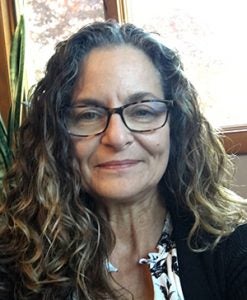By Catalina Martinez

How do we diversify our teams, our applicant pools, our programs or our workforce? For the entirety of my 20 year tenure as a proponent of JEDI (justice, equity, diversity, and inclusion) in the ocean science realm, I have heard these questions posed by all manner of science, technology, engineering, and math (STEM) professionals. Like many, I am frustrated about how little progress we’ve made in the past 40 years, [1] despite the U.S. population becoming more and more ethnically and racially diverse. [2] My own answer to the questions of how to address lack of diversity has evolved over time, but there is one thing I can say for sure: there is no silver bullet that can move the needle. No diversity intervention team that can swoop in to kick doors down to opportunity, or force an equitable, inclusive STEM culture that is conducive to the success of all.
This work is not simply a matter of ‘increasing diversity,’ but of creating inclusive environments infused with equity.
My suggestion at this point is to go into this work with a very different mindset, and be prepared to take a challenging journey that should begin by having honest conversations. In my experience, diversity efforts often begin and end with targeted recruitment. Although that is a critical component, efforts will continue to fall short unless we simultaneously address the less than welcoming STEM culture that can be present, posing significant barriers to entry, persistence and success for underrepresented students and scholars in our STEM programs and workforce. In other words, this work is not simply a matter of “increasing diversity,” but of creating inclusive environments infused with equity. This is hard work, and it will take sustained commitment from strong leadership, and a great deal of deliberate thought, intentional actions, and a series of conscious decisions to do things very differently going forward.
This year’s more honest national reckoning around systemic injustices and disparities in the U.S. could lead to some real progress. I recently heard the term ‘productive apocalypse’[3] to describe how this elevated national consciousness may be the catalyst needed to truly reimagine a more compassionate and equitable world moving forward. Whether this results in a sustained wave of change remains to be seen, but I am cautiously optimistic given what I’ve witnessed over the past few months. I have hope, and I truly believe that through collective will and a critical mass of champions, we can ensure that the next generation of STEM professionals fully represent the increasingly diverse demographics of the U.S. at large. Embracing a JEDI mindset is the first step. Are you with me?
1. Bernard, R.E., Cooperdock, E.H.G. No progress on diversity in 40 years. Nature Geosci 11, 292–295 (2018). https://doi.org/10.1038/s41561-018-0116-6
2. Vespa, Jonathan, Lauren Medina, and David M. Armstrong, “Demographic Turning Points for the United States: Population Projections for 2020 to 2060,” Current Population Reports, P25-1144, U.S. Census Bureau, Washington, DC, 2020.
3. Garfield, Robert, host. “Trump’s War on Critical Race Theory.” On The Media, WNYC Studios, 08 Oct. 2020. https://www.wnycstudios.org/podcasts/otm/episodes/trump-admins-war-critical-race-theory.
